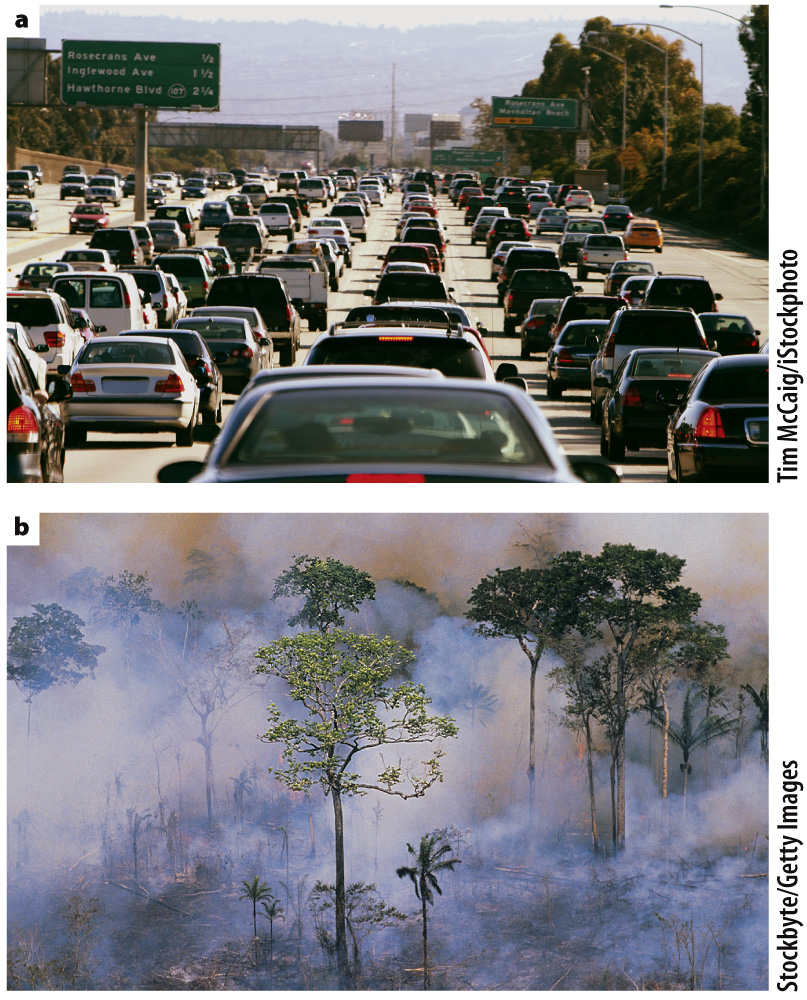49.2 Human Influence On the Carbon Cycle
In Chapter 25, we discussed the carbon cycle, explaining how photosynthesis removes carbon dioxide from the atmosphere and respiration replaces it. The remarkable data plotted in the Keeling curve (see Fig. 25.1) show that atmospheric CO2 levels have increased annually over the past 60 years, and analyses of air bubbles trapped in glacial ice show that this pattern of persistent increase began earlier, with the onset of the Industrial Revolution in the nineteenth century (see Fig. 25.3).
There is no longer any doubt that humans have become major contributors to the carbon cycle, particularly the part of the cycle in which ancient organic matter, or fossil fuel, is oxidized to carbon dioxide (CO2), returning CO2 to the atmosphere (Fig. 49.4). As discussed in Chapter 25, the amount of CO2 we add to the atmosphere each year by burning fossil fuel is about 100 times that produced by all Earth’s volcanoes together. And, as we also saw in Chapter 25, measurements over the past several decades of the relative abundances of 12C, 13C, and 14C in atmospheric CO2 make it clear that the CO2 now being added to our air comes primarily from the combustion of fossil fuels (see Fig. 25.4). Clearing forests for agriculture generates still more carbon dioxide (Fig. 49.4). When land is cleared for agriculture, the existing vegetation is generally burned off, converting much of the organic carbon in biomass and soil organic matter to CO2. No counteracting process removes CO2 at comparable rates.
